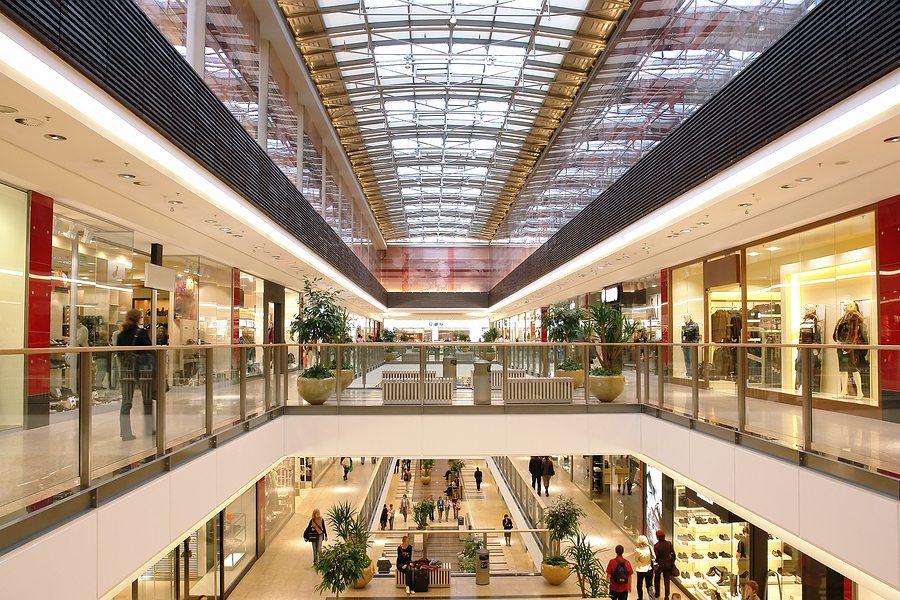Transforming Abandoned Malls with Apartments, Hotels and More
January 2, 2018

When the nation’s oldest indoor shopping mall closed in 2008, no one expected that a developer could turn it into a complex of micro-apartments so popular that 4000 people would be on the waiting list.
That was at The Arcade Providence in Rhode Island, but similar overhauls are taking place at abandoned malls across the country. Developers eager to salvage use from increasingly abandoned shopping complexes are spending millions to create financially viable futures that don’t rely on shopping.
Mall owners are battling online sales and consumer behavior that’s ravaging their core tenant base — department stores and apparel retailers. Malls that successfully weathered the Great Recession are taking the brunt of the latest wave of store closures and retailer bankruptcies. Did you know? 1 in 4 US malls predicted to close in 5 years.
Let’s look at how landlords and developers are renovating, upgrading and repositioning buildings to increase their appeal and revenue streams.
More restaurants and activities
There’s an exodus of key anchor tenants from traditional enclosed malls. Macy’s, J. C. Penney, Sears, Payless Shoes — the list of national and regional chains leaving malls is growing.
Many malls have been repositioning properties with tenants that focus on giving customers an experience, such as fitness centers, spas, bowling alleys and rock climbing gyms.
A 2017 study by investment management company JLL revealed the following about US malls:
- They have invested more than $8 billion in capital improvements over the past 3 years.
- More than 40% were adding restaurants.
- About 20 percent had removed the word “mall” from their names, opting for alternatives such as “village” or “shoppe”.
Clinics, hotels and schools
Landlords are also turning to non-retail tenants — such as medical clinics, hotels and apartments — to create mixed-use properties, like the one in Rhode Island. Of the malls in the JLL study, just over 40% were adding multifamily services, while another 33% were carving out space for hotels.
Some abandoned malls are being completely repurposed or recycled. New uses include schools and industrial distribution facilities meant to get closer to the “last mile” of customer fulfillment.
Austin Community College purchased the 1.2-million-square-foot Highland Mall in Texas several years ago. According to The Atlantic, the school converted the 1970s mall into a cutting-edge education facility — featuring a regional workforce training center; a high-tech science, technology, engineering and mathematics (STEM) simulator lab and digital media center; and a culinary and hospitality center to provide students with hands-on restaurant experience.
The shrinking mall landscape
Brick-and-mortar retail is not destined to become obsolete. But in a market that clearly has too many stores, mall owners and developers are changing fast so they don’t get stuck with obsolete property.
The malls that thrive will be those that become destination centers offering more than just retail shopping and a traditional mall experience.
Financial services company Credit Suisse predicted the 25% closure rate for malls. Some will become bargain-priced investment opportunities. There’s a growing list of redeveloped malls that are now industrial distribution sites, churches, city offices and educational learning centers.
Bottom line
The Arcade Providence in Rhode Island has hosted tenants of one sort or another and brought in revenue for almost 200 years. Other mall owners can do the same.
Today’s mall owners need to take a thoughtful, strategic approach when seeking a new path forward for their properties. Changing consumer habits and new technologies mean that traditional malls could be repositioned to offer services and experiences that appeal to those who want something they can’t just order online.
Aprio’s Real Estate group advises all types of real estate owners, including mall owners and developers. We can provide tax and business strategies to maximize the value of your next project. In addition, we can connect you with investors, lenders or other service providers in our network. For more information contact Samantha Williams.
Recent Articles
Stay informed with Aprio.
Get industry news and leading insights delivered straight to your inbox.
